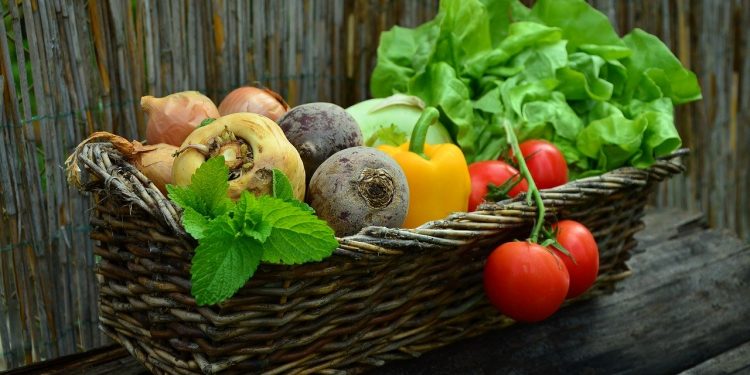How to source vegetables other than Danish cabbage during the winter
If you are used to lovely fresh and tasty vegetables (and fruit) all year round shopping what you are used to may be a challenge during the winter season. Find a few tips here.
The article continues below.
Low nutritional value in fresh produce which comes from afar
Nutritional experts recommend shopping locally produced fresh produce as they contain more vitamins and minerals than fruit and vegetables, which have travelled far.
The lower content of vitamins and minerals comes from the fact that, in order to supply modern consumers with fresh produce that looks good and has no bruises, fruit and vegetables are picked before they become ripe.
This makes transport over longer distances much easier; the ripening process is stopped during transport and set back in action upon arrival with a gas called ethylene. It has the same effect as when you put oranges and bananas together – the bananas ripen quickly in your fruit bowl.
However, picking them before they are ripe, means that they have not been able to absorb as many nutrients; minerals and vitamins, as the ones left on the stem for a longer time and only harvested when they are ripe. The longer they stay on, the more they absorb.
An American study found that there was a lower amount of vitamins and minerals in 43 different crops when comparing values measured in 1950 with those of 2015.
“If a fruit is left on a plant until the end of its life cycle, it’s able to recycle all the energy from the plant. If you pick it early, you truncate that process and get fewer sugars in the fruit, sugars which are needed to bind the nutrients. If you pick a tomato that you have grown at home, it tastes fabulous because it’s absolutely ready to eat.
But there’s no way you could do that at a commercial level because of the bruising that would occur when ripe fruit and vegetables are transported through a typical supply chain. There has to be a compromise somewhere,”
says Dr. Carol Wagstaff, professor at the University of Reading (UK), in the New Scientist’s article” Best Before”.
During the summer season there is good selection of Danish produce to choose from, so you may find the eat local easier to comply with.
However, during the winter months sourcing local becomes a real problem.
A variety of cabbages, carrots and potatoes make out the largest selection of local produce and the local selection of fruit is limited to Danish apples and pears.
So what to do.
Contrary to most beliefs – frozen fruit and vegetables are actually a good alternative.
Nutritional experts all emphasize that the fruit and vegetables, which consumers can buy frozen, are harvested when ripe and frozen only shortly after they were picked. Thus they preserve a vast amount of vitamins and minerals, as the degradation process of the nutrients has not yet begun.
“Frozen vegetables are extremely good in terms of nutritional value. They are left on the plant longer, so they are at a better ripening stage when picked. Peas, for example, lose 50 percent of their vitamin C content within 48 hours after picking.
Most peas selected for freezing are in sub-zero temperatures within two hours after picking, retaining a huge chunk of their nutritional value. These icy peas also need significantly fewer additives. The preservation is from the frosty temperature,” says Dr. Carol Wagstaff .
So next time you go shopping – check out the frozen counter as an alternative to the fresh one.
Source: Chloe Lambert, “Best Before?” New Scientist, 17 October, 2015
By Bente D. Knudsen Picture: Congerdesign from Pixabay
Support our magazine with a contribution of any size
We do not want to put up a pay-wall, so we need your support and if you find our content relevant and worthwhile, we would value any contribution, however big or small, as a token of your appreciation of our efforts.
How to support:
Transfer any contribution to our bank account at: Your Danish Life/ Danish Expat Media Aps
Danske Bank Account number: 3409 11405673
IBAN: DK68 3000 0011 4056 73
or MobilePay to 2144 1224
Message: Support


